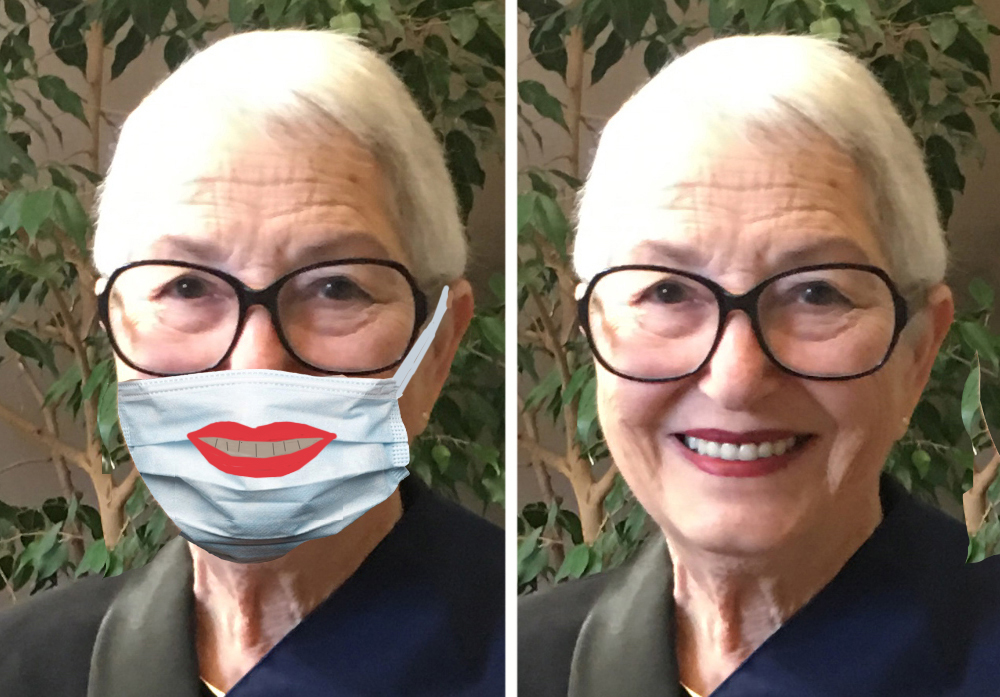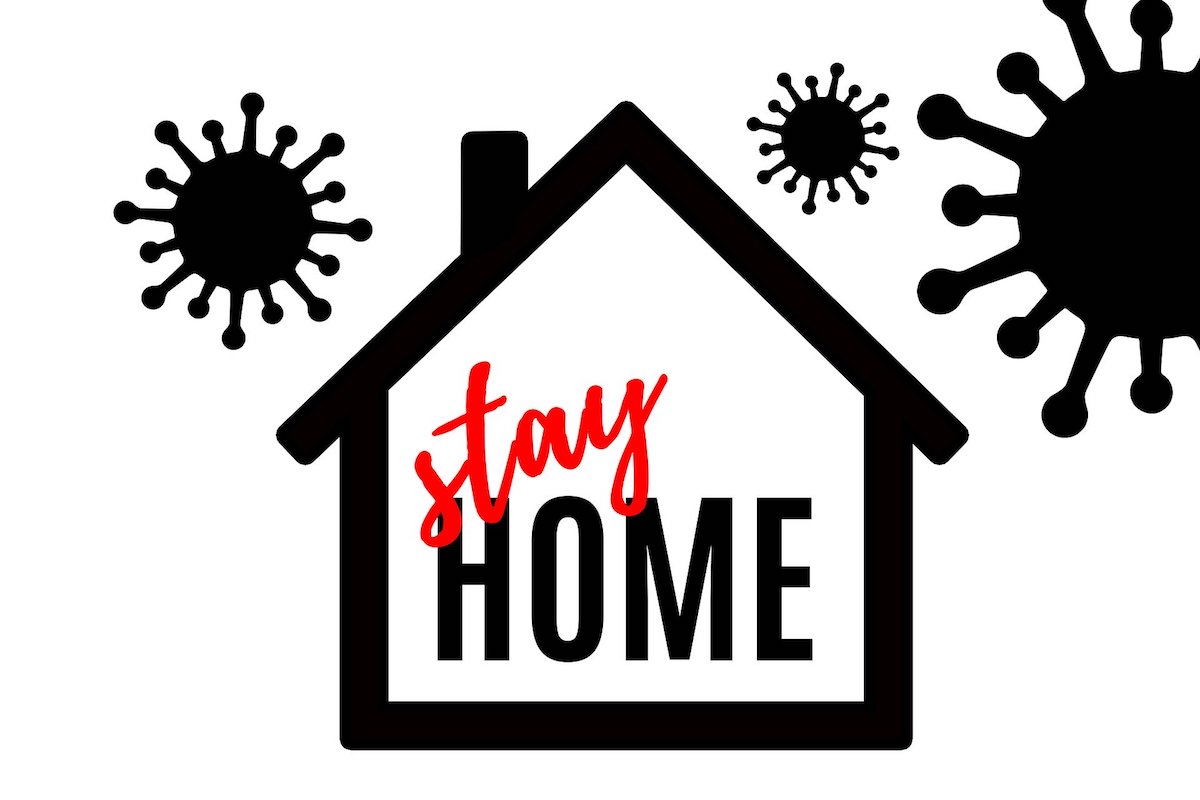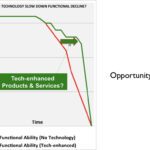By: Editorial Team | Posted: April 1, 2020 | Updated: April 5, 2023
While staying at home for weeks or months on end is hard for everyone, older adults have some unique challenges. And as the enforced lockdown winds down eventually, those over 70 are likely to be the last to see a return to “normal” life.
We created this page so members of the Tech-enhanced Life community have a place to share their learnings about how they are handling the challenges of “sheltering in place”.
We have some suggestions that may be helpful, and share them below. But we hope you will share what you are learning too, either with comments or by email — and we will add them to this page which will be a living repository of learnings.
Social Connections
As days of isolation turn into weeks, people’s minds turn increasingly to connections with friends and family. And to new ways to interact virtually with people who share their interests.
Let us know what you are doing to stay connected in the time of COVID-19.
And if you are wanting to start doing video calls, but are not sure how, take a look at our suggestions for the best technology for Video Calls. And if you have better ideas please add them to that post. See also “Virtual Connections to the Tech-Challenged“.
Getting the Groceries
Other than avoiding getting sick, the most essential need we all have is a regular supply of food and water. Grocery delivery services have become an essential part of daily life.
But what if you are not sure how to use them or which ones to try?
Our Longevity Explorers have been having success with Instacart, which can deliver from many stores including Safeway, and with Wholefoods delivery. But there are many other services, some of which are limited to specific regions of the country.
If you are knowledgeable about grocery deliveries, please weigh in.
Are you “Getting Groceries for Others”?
One of our explorers started a conversation about what to do if it is now your “job” to help others with their grocery deliveries (such as an older adult who is not tech-savvy).
- Join the conversation: Groceries in the Time of COVID: Ideas?
Medication
All the online advice for the pandemic points out how desirable it is to have a 90 day supply of essential medications.
In addition to this good advice, however, we are getting enquiries like this:
I go weekly to my mother’s house and fill up her pill organizer with her medications for her —so she can take the right medication at the right time. But now I can’t visit her. What should I do?
There are a couple of solutions to this dilemma.
- You can get some pharmacies to deliver pre-packaged daily packs containing medication that has already been organized for you (e.g. PillPack).
- Alternatively, you can now buy some very sophisticated automatic pill dispensers that can hold up to 90 days of medications, and which do the “organizing” for you — making the need for visits much less frequent.
You can see some quite extensive research we have done into these various pill dispenser products here.
Preparing for the Worst
The unfortunate truth is that older adults are especially vulnerable to COVID-19. So, many of our community want to be sure they are adequately prepared in case they get sick and the worst happens.
Some “End of Life Planning” seems like a good idea if you have not done it up to now.
- See our research and recommendations for End of Life Planning, POLST/MOLST forms, and Advance Directives.
Help in Emergency
If you are spending much more time at home alone than you normally do, you might be wondering what would happen if you had an accident or got sick.
In case you are thinking a medical alert might make sense, we have spent many hours evaluating these products.
- You can find our medical alert research here.
Remote Medical Consultation (Telehealth)
But what will you do if you actually get sick?
The days of just popping down to the doctor’s office or heading into the Emergency Room are over for the present.
Instead, ideally you would do a “virtual consultation” with your primary care physician, who can ask about your symptoms and try and triage the situation — and tell you exactly what to do.
Many healthcare systems now offer this telehealth service.
We think it’s good to be prepared in advance. We suggest:
- find out if this is a service that your healthcare provider offers;
- check if it will be covered by your insurance, or think about how you would pay for it if it is not;
- start thinking about what “tools” you might need to make such a virtual consultation effective.
By “tools”, we mean things like a thermometer, so you can tell the doctor what your temperature is. And perhaps other devices to help with diagnosis, like a blood pressure monitor, and a pulse oximeter.
And it would be a good idea to find out what “platform” your doctor likes to use (learn more about video call technology), and experiment with it in advance. Because you are not going to want to be trying to figure out how to do video calls when you are sick, and badly need a virtual consultation.
Share What You Are Doing
Please add your ideas, and what you are doing to adapt to the new reality we find ourselves in — by adding your thoughts, learnings, or questions below.
Useful Products & Resources
Looking for something specific we don’t mention here? You can search in our “Useful Products and Resources” listings database for things that seem potentially relevant to this situation.
Stay Positive
It’s well worth reading some of the comments below from older adults, as they provide an antidote to the doom and gloom and stress-inducing tone of most media coverage.
Here is one of our favorites from explorer Edna S in Idaho.
Since we have to wear a face mask we could use our lipstick to paint a smile over it when we go out for fresh air rather than to rob a bank.

*Disclosure: The research and opinions in this article are those of the author, and may or may not reflect the official views of Tech-enhanced Life.
If you use the links on this website when you buy products we write about, we may earn commissions from qualifying purchases as an Amazon Associate or other affiliate program participant. This does not affect the price you pay. We use the (modest) income to help fund our research.
In some cases, when we evaluate products and services, we ask the vendor to loan us the products we review (so we don’t need to buy them). Beyond the above, Tech-enhanced Life has no financial interest in any products or services discussed here, and this article is not sponsored by the vendor or any third party. See How we Fund our Work.





Now, more than ever, do our
Now, more than ever, do our residents need to be mobile and/or tech savvy. At the very least, they should have a working email. From personal experience with my 82 year old mom, access to email has been the biggest obstacle. She often forgets the password and loses access. She also (proudly) boasts that she has 23,000 emails (mostly spam), and that she is just inundated with the whole experience.
I would urge family members to help their parents to set up a secure inbox/email from which important communications from their Association or facility come to.
Secondly, those who live in a community or residence should have easy access to website information where up-to-date emergency/situation information is posted. With interactive screens available at some facilities, you’re in a good place to push information out. We have redesigned our home page of our website to post up-to-date information on the public side (versus private side which requires a login, to which many seniors, again forget). Now, both the resident as well as the resident’s family can see that we are indeed pushing out appropriate information in this critical situation. In our community (of 10,000 residents), we are also making outreach calls. From these calls, we are able to give critical information, and also correct errors in communications, which have included wrong email addresses on file, and unsubscribes from years ago.
Cloth Masks look pretty but
Cloth Masks look pretty but do they stop the virus from spreading?
I am a 95 year old ww2
I am a 95 year old ww2 veteran, I live in water edge assisted living in Hayward, Wis. We here are in a lockdown because of the virus, if we leave the bldg. we will be quaranteened in our room for 14 days when we come back, we here are treated like royalty, great meals, medical care etc. I am fortunate that my medications come from the V.A. free of charge as I am a 100% disabled vet. having been wounded in ww2. I spend ,y time in my room watching t.v. and on the computer, i like to cook so i spend time doing small things like making deviled eggs, pan cake batter, french toast and once in awhile I willcook some meat in the crock pot, just something to do to kill time, nothing else to say excepy i hope we conquer the viras
Wonderfully inspiring. Keep
Wonderfully inspiring. Keep well.
I love that you keep moving.
I love that you keep moving. Awesome to hear! Hope you get your covid vaccine soon! I am trying to set up an Echo Show for my 94 year old mother-in-law to keep her connected. Thank you for your inspiring words!
Since we have to wear a face
Since we have to wear a face mask we could use our lipstick to paint a smile over it when we go out for fresh air rather than to rob a bank.
Love this!!!
Love this!!!
I know it’s weird, but I feel
I know it’s weird, but I feel strangely lightened – from needing to be places or do things, I have given myself permission to watch as much TV (thank you, FireStick) or play as much solitaire as I want. On-line exercise classes (Silver Sneakers seems to be avaialable without membership) and a couple of Zoom groups every day, including a morning worship service that starts my day with friendly faces and familiar ritual keeps me centered. Most of all, the two things my Rabbi told us early on: Lower expectations and Set priorities, has been helful. Who knew that one of my priorities would be playing a game of Freecell?
I work in an Assisted Living
I work in an Assisted Living and Memory Caring community in San Francisco. The new, most popular activity during this time when residents are pretty much in their apartments are Zoom calls with their families. Only about 30% of residents have any type of cellphone, so tech use was on the low end. However, the magic of Zoom calls with families has exponentially increased the interest in using technology because of the immediate impact of being able to virtually visit in an otherwise locked down environment. With an average age of 88, this is especially encouraging!
Hi Permalink,
Hi Candiece,
Can you share some details of how the residents are able to use Zoom? Do they families send them a link to click on and hope they will see it? Who setup Zoom on their device?
How you looked into using Google Duo? It provides a real-time video connectionm with no need to arrange a "meeting" with a "link"
Most often, one of our
Most often, one of our Resident Staff sets up the Zoom call for the resident when they don't know how to use Zoom. Given the average age being 88, even if they learn Zoom, they often forget and need assistance so we just offer the service. That said, there are a few residents who enjoy using tech and have mastered Zoom enough to use it on their own. So whether they or their family send them a link to join, we are not sure about that piece. If the resident asks, we can set up a link on their own devices which are usally computers, not phones and a few notepads.
We aren't using Google Duo at this time. In fact, we backed off the Zoom calls because for a short period, we were permitted to offer in person visits on a scheduled basis (with all the mask and distancing, disinfecting protocols). Now that the city of SF has once again eliminated them to the great detriment of the mental well-being of residents, we are resuming Zoom visits.
Get up, make a nice cup of
Get up, make a nice cup of coffee and have the first sip outside, on your front step or balcony. While enjoying those first sips, take in a few fresh deep breaths, and count all your blessings. To pass the time, enjoy a good read, make a tasty meal, start a challenging puzzle or crossword, practise the piano, phone an old friend, pick a household chore to do daily . In between all this- crank up some good music and dance in the kitchen for 10 minutes – 3 times a day. Music and movement are great mood lifters.
I have been using Instacart
I have been using Instacart and Shipt for a while since I don't drive (macular degeneration) and love the service. Been difficult with "sheltering in place" because the services are overwhelmed and getting a time slot takes some doing. Trick, order very early in the morning or very late at night for next day. I keep a list of things I need on the site so I can quickly grad a delivery time.
One of our Memory Care
One of our Memory Care residents has a GrandPad to keep in touch with her family, especially important due to the COVID-19 sheltering in place and limitations on family visits. It is a subscription service through Consumer Cellular. Cost of the device is around $200, then $40 per month. Has a variety of games pre-installed, such as solitaire, Sudoku, crosswords, music (sorted by genre), family can update notes and photos.
Kudos to Edna S. in Idaho for
Kudos to Edna S. in Idaho for finding a pleasant way to 'make over' a mask! Mine is made from a Crown Royal bottle bag, and it always gets a pleasant response.
I have been in a virtual
I have been in a virtual world called Second Life (www.secondlife.com) for twelve years. It is a wonderful resource for those of us who are mostly at home. In it, you can go to all sorts of arts performances, join various interest groups, have adventures exploring many venues, go dancing (no need for a partner!), make objects and collaborate on all sorts of projects, and chat (vocally and by text) with people from around the world. And, yes, elders, there are mentors who will help you learn the basics of getting around. I also make art, play music, watch movies, do jigsaw puzzles (digital!), read books, and talk regularly with interest groups, my church, my friends and family on Zoom, Facetime or Skype. These technologies are not difficult to learn to use. I belong to an online network called Next Door for my local community but they are all over the country. People offer to shop and bring groceries to your door. Many other resources and suggestions can be acquired through them. (www.nextdoor.com).
Here is what has worked for
Here is what has worked for me:
Zoom calls with extended family and Google Hangouts for my son, his wife and their baby. Grocery shopping- senior hour at start time, have list, walk with cart to get distance (mandatory at TJs), go reverse through store and pick up heavier bottles and canned goods first, frozen and fresh last. Make daily todo lists and include some tedious, neglected project each day like cleaning and sealing marble countertops or shower door, sorting computer files or photos. Contact friends/family. Get outside for walk or just to sit in the sun. Also do stretching, yoga, Zumba and/or Pilates. Read everything but limit news.
I would like to know hobbies
I would like to know hobbies or new activities senior are engaging in while staying home. For example, I took a few piano lessons when I was young, now have a keyboard, ordered a Thompson piano lesson book, and am trying to teach myself to play. Another idea is I have never been into gardening but plan to investigate what it takes to grow a few vegetables (tomatoes, green peppers, etc) in a small area near my back porch. Perhaps a few herbs would be possible. I’ve heard that parsley keeps growing after some has been cut. I’ll need advice from my gardening friends which will be a good use of time staying in touch instead of just chatting.